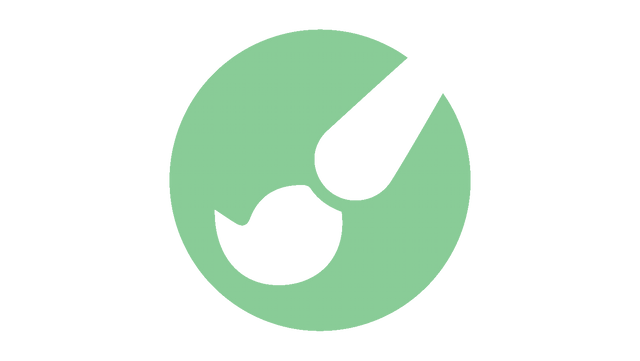Domains of Business Agility
- Customer
- / Customer
- Leadership
- / People Management
- / One Team
- / Strategic Agility
- Individuals
- / Growth Mindset
- / Craft Excellence
- / Ownership & Accountability
- Operations
- / Structural Agility
- / Process Agility
- / Enterprise Agility

Craft Excellence
01 Introduction
Business Agility requires craft excellence that continually improves over time, is the most impactful to creating value, and enables individuals to take advantage of emergent opportunities for customers.
For decades, agile teams have promoted strong Craft Excellence as the keystone for “being” agile. The purpose being to increase quality & throughput and, at the same time, embracing uncertainty & change. Many of the agile methods developed over the last 20 years, such as Extreme Programming (XP), Behavior Driven Development, Test-Driven Development, Refactoring, Continuous Integration, and DevOps, are almost entirely devoted to craft excellence.
If craft excellence isn’t a priority then, as time goes on, every work product becomes harder to enhance and improve. Each new feature or service added introduces additional complexity and dependencies, which in turn increases rigidity of the entire system against further updates. This leads to fragile products, duplication of effort, design decay, greater risk of defects & errors, slower work, and a compounding increase in cost to meet market demands.
On the other hand, business agility (and craft excellence specifically) aims to minimise the economic impact of change rather than minimise change itself. Continuous attention to craft excellence and principled design enables us to continually simplify as we go: breaking unnecessary dependencies, ruthlessly cleaning & refactoring work products, the work environment, and eradicating unwanted complexity & quality leaks (with as much automated assistance as possible).
Despite many of the examples being technical in nature, craft excellence isn’t limited to software teams. Any domain of work can be technically agile; from agile marketing campaigns in marketing teams, Beyond Budgeting in finance teams, and talent management in HR teams. To be agile, any work practice or technique must be designed to tolerate ambiguity, be customer-centric, seamlessly respond to change, and promote collaboration. To benefit from business agility, your organization requires the other domains, but these techniques & practices are generally a good place to start.
02 Moving from Theory to Practice
Your goal is to incrementally produce high-quality work, specifically aligned to a business outcome.
Adopt Agile Techniques
Regardless of your domain, skill, or craft, common agile techniques are designed to improve the quality of your work while aligning it to business outcomes. Agile techniques that apply broadly include; pair work, test-driven work, daily planning, retrospectives, etc. Agile practices are effective for almost any team and any type of work. Some types of work also have their own agile, or agile-like, techniques. Software teams are the most obvious with the full spectrum of agile practices, whereas management accounting teams have Beyond Budgeting, Manufacturing has TPS & lean techniques, etc.
Automate Repetitive Work
Software teams have had the advantage of automating repetitive tasks for a very long time. This has allowed individuals to focus more on higher-value knowledge work. Yet, as technologies mature and become available more broadly, more teams are able to take advantage of such automation. Techniques like Robotic Process Automation can support teams, such as HR and finance, enabling them to focus on higher-value work.
Measure Quality of Outcomes
There is an old project management joke; “time, price, quality, pick two”. While there is some truth to that, the reality is that business agility requires quality. To compound matters, there are multiple definitions of quality that we need to consider; work quality, perceived quality, and outcome quality.
Craft excellence means delivering work at the right quality for the context. Quality of work requires that execution minimizes defects and is designed for unanticipated changes. The customer’s perception of quality requires that the user experience is seamless. Today’s customers are expecting nothing less; a quick look at any Apple device or the Google homepage makes this evident. Finally, the quality of business outcomes is the difference between doing the work right and doing the right work. As the old saying goes;
“there is nothing worse than doing well, that which should not be done at all”.
03 Measuring your Business Agility Maturity
Crawl
Walk
Run
Fly
Adaptability
We break work into small components (and continuously plan) in order to adapt when customer requirements change.
Adaptive (or agile) techniques are being adopted, not just in technology, but in some operational, business, executive, and strategic teams as well.
We have continuous delivery of value, so our customers see immediate benefits and provide feedback faster.
We have designed all work practices and techniques (across all divisions) for ambiguity, collaboration, customer centricity, adaptability and responding to change.
Technical Excellence
We have begun to instrument quality metrics across a broader number of factors. These are transparent to all relevant stakeholders to reduce test/repair and rework cycles.
We measure the quality of our work based on multiple qualitative and quantitative factors besides reducing errors. These may include; fit for purpose, reusability, and adaptability.
We balance a quality first approach against cost & utility to all the work that we do. We have adopted techniques (such as pair work) to achieve this.
We sustain our craft excellence by continuously developing skills & improving processes to reduce waste and defects. We have clearly defined procedures, as well as appropriate tools & systems, to guide and support us.

